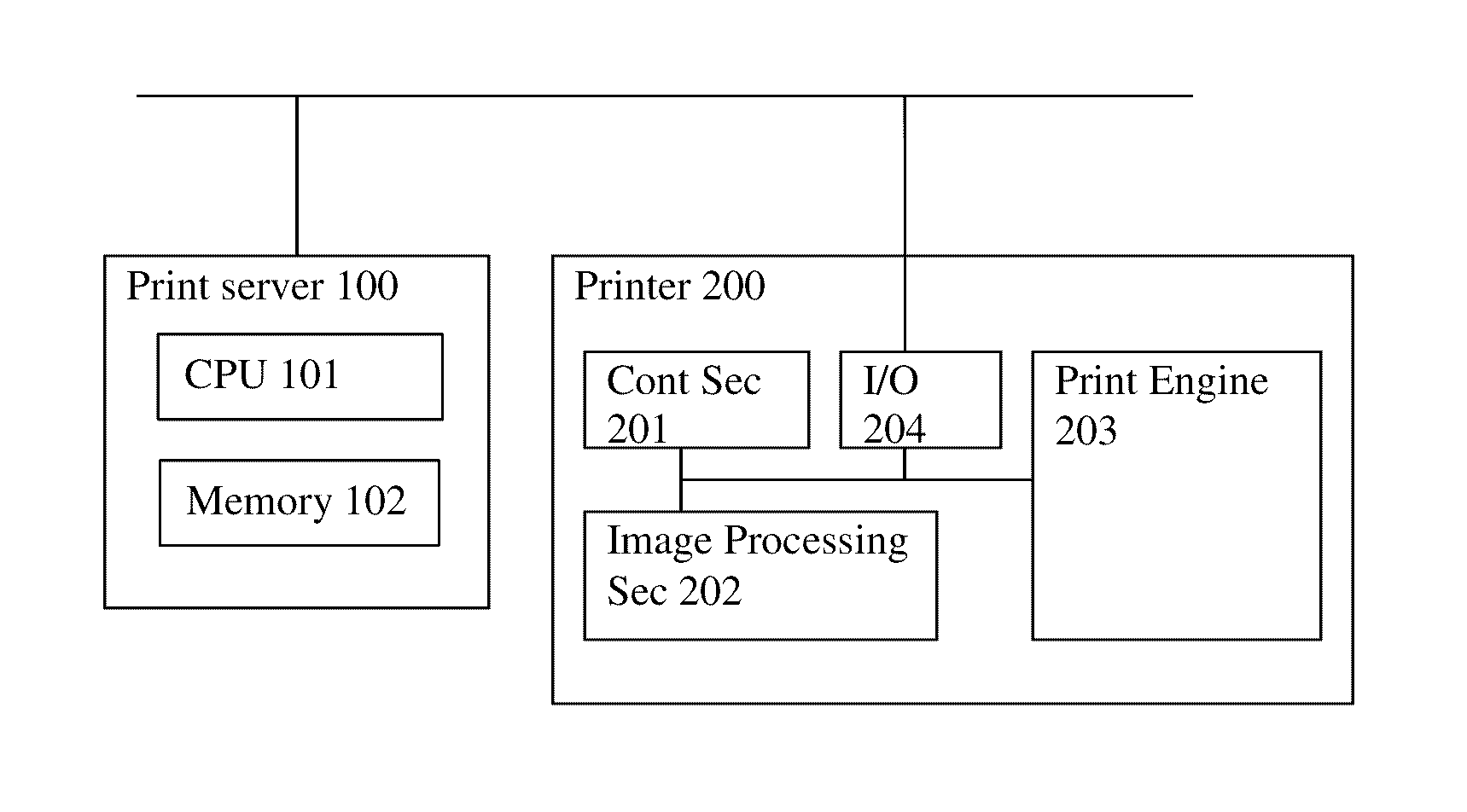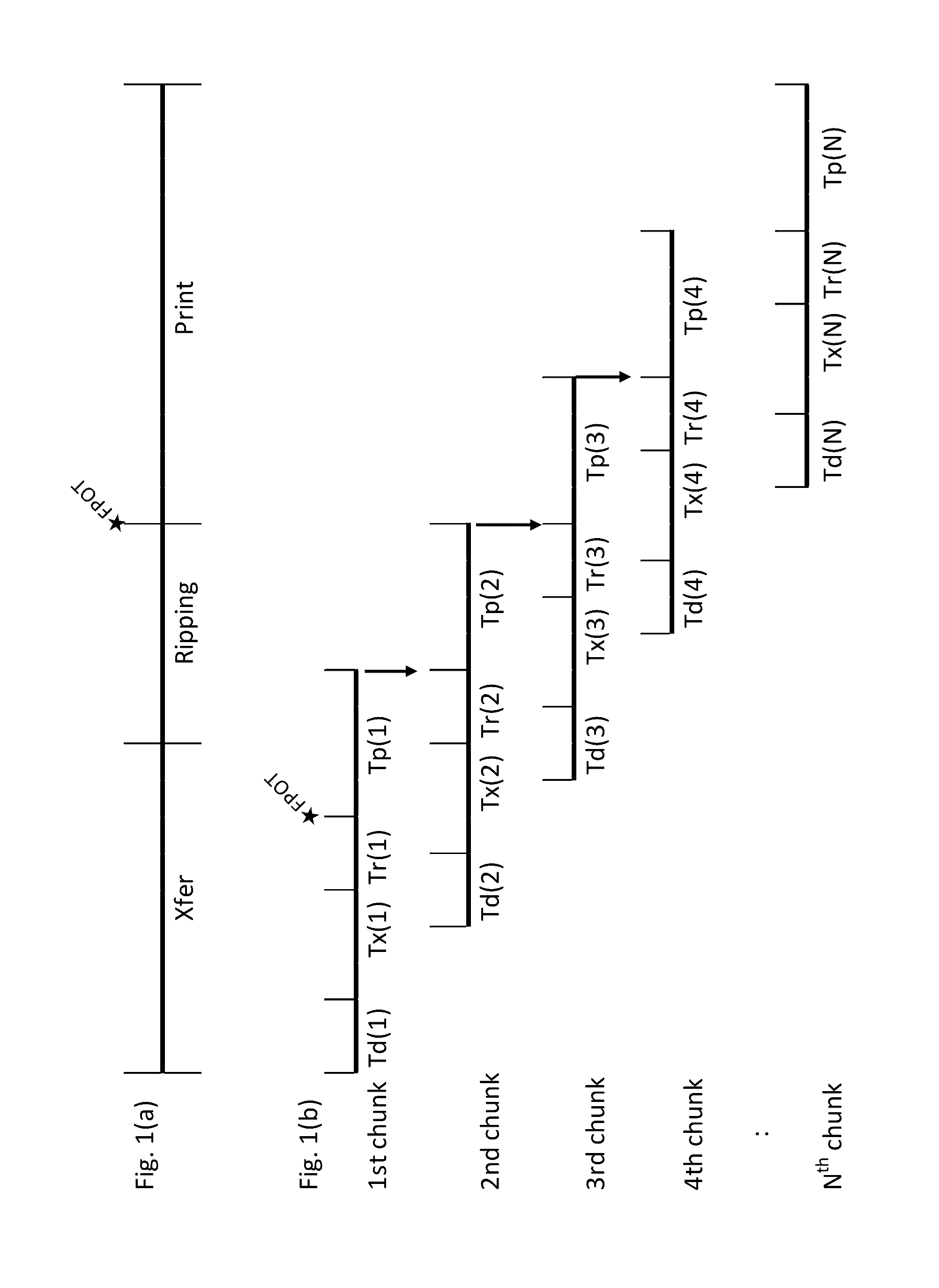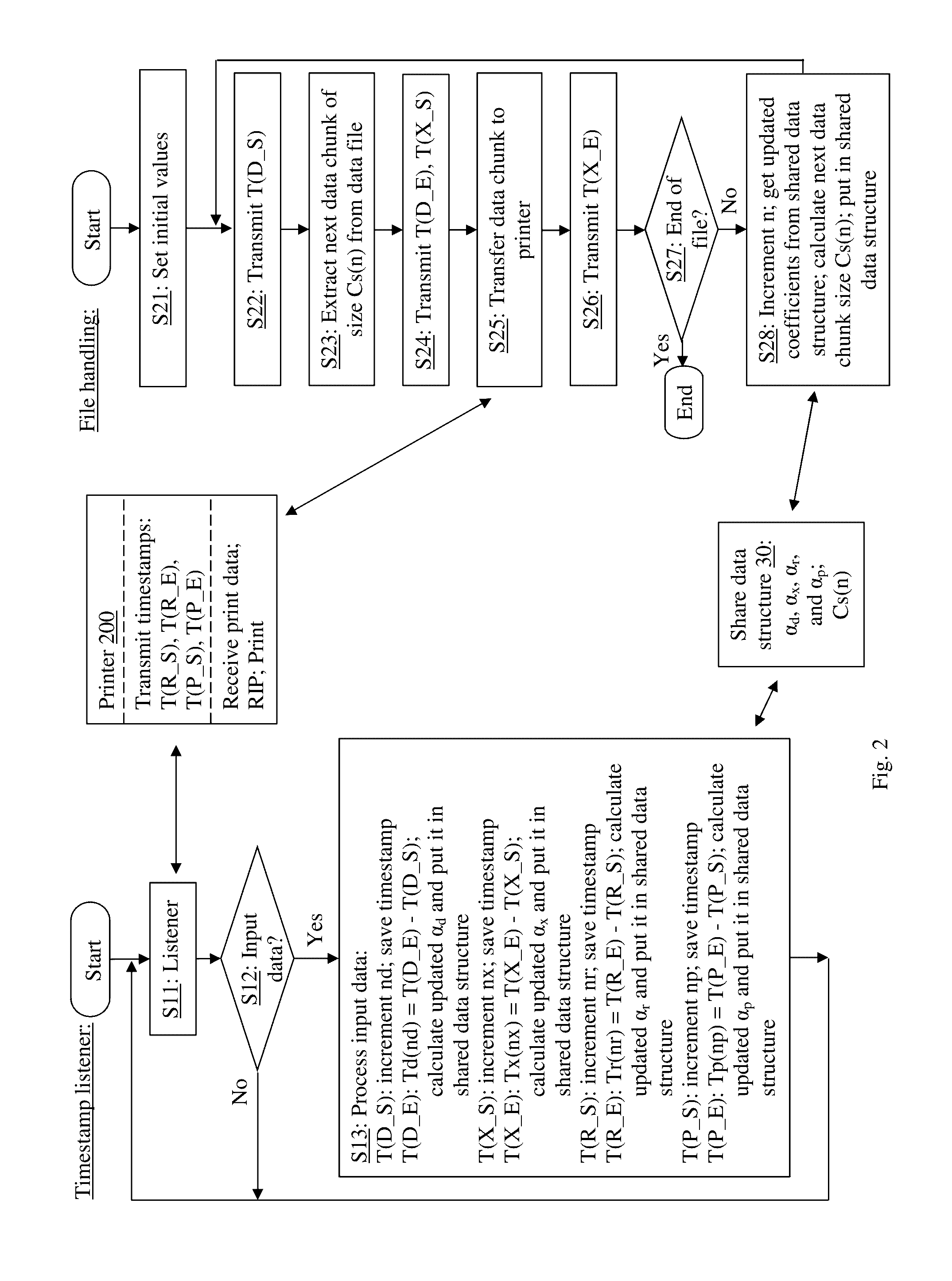Stream printing method for handling large print jobs to achieve reduced first-page-out time
a printing method and large print technology, applied in the field of printing methods, can solve the problem of long first-page-out time (fpot), achieve the effect of reducing fpot, improving printing efficiency, and reducing fpo
- Summary
- Abstract
- Description
- Claims
- Application Information
AI Technical Summary
Benefits of technology
Problems solved by technology
Method used
Image
Examples
Embodiment Construction
[0017]Embodiments of the present invention provide a printing method which divides a large print file into multiple consecutive data chunks and sends the chunks sequentially to the printer, so that the printer can start printing the first data chunk quickly, while minimizing any stop time between printing of the data chunks. The printing methods can shorten the first-page-out time, and improve throughput of the entire file, by dynamically selecting optimum sized data chunks depending on the conditions such as the print file (PDF) type, CPU load, RAM usage, network speed, print speed, etc. The processing is done in the background automatically and is transparent to the user; in other words, to the user, it works as if a single large file is being printed.
[0018]FIG. 3 schematically illustrates a system in which embodiments of the present invention may be implemented. It includes a print server 100 and a printer 200 connected to each other by a network. The print server 100 includes a ...
PUM
 Login to View More
Login to View More Abstract
Description
Claims
Application Information
 Login to View More
Login to View More - R&D
- Intellectual Property
- Life Sciences
- Materials
- Tech Scout
- Unparalleled Data Quality
- Higher Quality Content
- 60% Fewer Hallucinations
Browse by: Latest US Patents, China's latest patents, Technical Efficacy Thesaurus, Application Domain, Technology Topic, Popular Technical Reports.
© 2025 PatSnap. All rights reserved.Legal|Privacy policy|Modern Slavery Act Transparency Statement|Sitemap|About US| Contact US: help@patsnap.com



